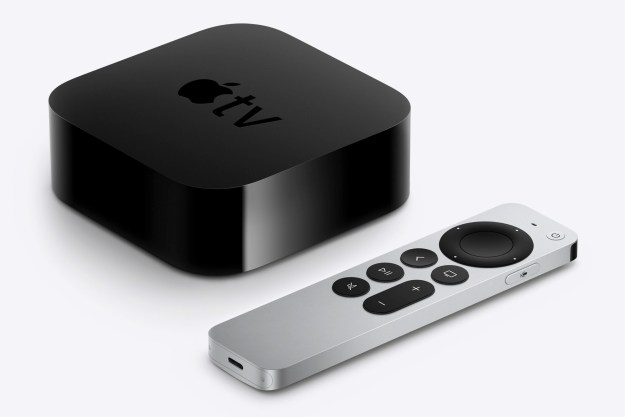
4K Ultra HD Blu-ray Player
At least so far, Philips is one of only three companies to announce a 4K UHD Blu-ray player, along with Samsung and Panasonic. The Philips BDP7501 features HDR support, which means that it should fit in well with any of the 4K TVs the company has announced this year, but perhaps the most interesting aspect of the player is its compact design. The player looks more like a set-top box than a standard Blu-ray player, and the minimalist look is striking.
The BDP7501 features built-in support for both the HEVC and VP9 codecs, so streaming 4K content from Netflix, YouTube and others will work as intended, and should look great. Upscaling for non-
8600 Series TVs
All of Philips’ 2016 4K TVs will feature HDR support, and they even share similar features. The main differences come down to a few features here and there and just how good the picture is. If you want the company’s best of the best, the 8600 series, available in 55-inch and 65-inch models, provides top-tier performance.
The 8600 series includes Dolby Vision HDR support and a wide color gamut, at 82 percent of the BT.2020 standard. This series is the only line to feature Philips 240 Perfect Motion Rate, so sports fans may find this to be the go-to line for them. Like all of Philips’ 2016 TVs, this series features 802.11ac Wi-Fi with MIMO antennas, Sonic Emotion Premium sound, and built-in apps including Netflix, YouTube, Vudu, Xumo and Pandora.
7000 Series TVs
This series is described by Philips as having a “Razor Slim” cabinet, and most of the features included in the 8600 series are also included here. You’ve got a 120 Perfect Motion Rate instead of 240, and you won’t find Dolby Vision, but the BrightPro backlight, apps, and Wi-Fi are all still present. Motion and color gamut may not be quite as nice as the 8600 series, but this is still a feature packed series.
Two sizes are available for the 7000 series, with 50-inch and 55-inch variations. The 6000 series described below actually offers a larger model, so it seems that Philips didn’t want to sacrifice picture detail here just to boast a larger screen size.
6000 Series TVs
Philips describes the 6000 series as “affordable Ultra HD performance,” but many of the features included in the more expensive series are here as well. The Pixel Plus Ultra HD processing engine, wireless screencasting, and HDMI 2.0a with HDCP 2.2 on all ports that are featured in all of Philips’ 2016 TVs is here. Micro Dimming is included instead of Micro Dimming Pro, and like the 7000 series, this line is limited to a 120 Perfect Motion Rate.

The series is available in the widest range of sizes, with 65-inch, 55-inch, and 49-inch models all available. If you’re looking at 4K but don’t mind forgoing some of the extra goodies included on the more expensive lines, this is the line you’ll be most interested in.
No pricing information is yet available for the TVs announced, but we expect pricing to be similar to comparable products from the company’s 2015 lineup.
Editors' Recommendations
- Sony debuts the Bravia 9, its brightest 4K TV ever, alongside new 2024 models
- TCL’s giant 115-inch QM89 is the world’s largest 4K mini-LED TV
- New Apple TV 4K tweaks the internals and the price
- Acer’s TV-sized Predator gaming monitor is OLED, 4K, and living room-ready
- BenQ’s new 4K HDR projector is designed with gamers in mind


